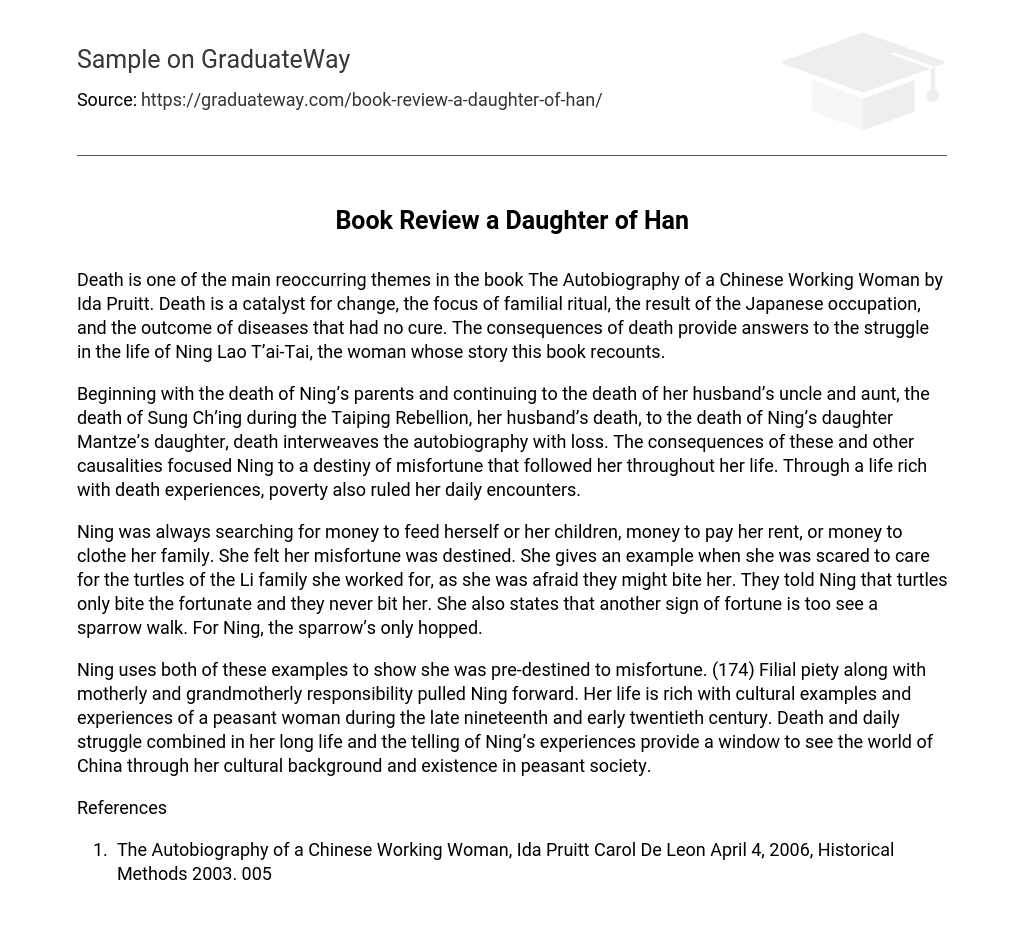Death is one of the main reoccurring themes in the book The Autobiography of a Chinese Working Woman by Ida Pruitt. Death is a catalyst for change, the focus of familial ritual, the result of the Japanese occupation, and the outcome of diseases that had no cure. The consequences of death provide answers to the struggle in the life of Ning Lao T’ai-Tai, the woman whose story this book recounts.
Beginning with the death of Ning’s parents and continuing to the death of her husband’s uncle and aunt, the death of Sung Ch’ing during the Taiping Rebellion, her husband’s death, to the death of Ning’s daughter Mantze’s daughter, death interweaves the autobiography with loss. The consequences of these and other causalities focused Ning to a destiny of misfortune that followed her throughout her life. Through a life rich with death experiences, poverty also ruled her daily encounters.
Ning was always searching for money to feed herself or her children, money to pay her rent, or money to clothe her family. She felt her misfortune was destined. She gives an example when she was scared to care for the turtles of the Li family she worked for, as she was afraid they might bite her. They told Ning that turtles only bite the fortunate and they never bit her. She also states that another sign of fortune is too see a sparrow walk. For Ning, the sparrow’s only hopped.
Ning uses both of these examples to show she was pre-destined to misfortune. (174) Filial piety along with motherly and grandmotherly responsibility pulled Ning forward. Her life is rich with cultural examples and experiences of a peasant woman during the late nineteenth and early twentieth century. Death and daily struggle combined in her long life and the telling of Ning’s experiences provide a window to see the world of China through her cultural background and existence in peasant society.
References
- The Autobiography of a Chinese Working Woman, Ida Pruitt Carol De Leon April 4, 2006, Historical Methods 2003. 005





